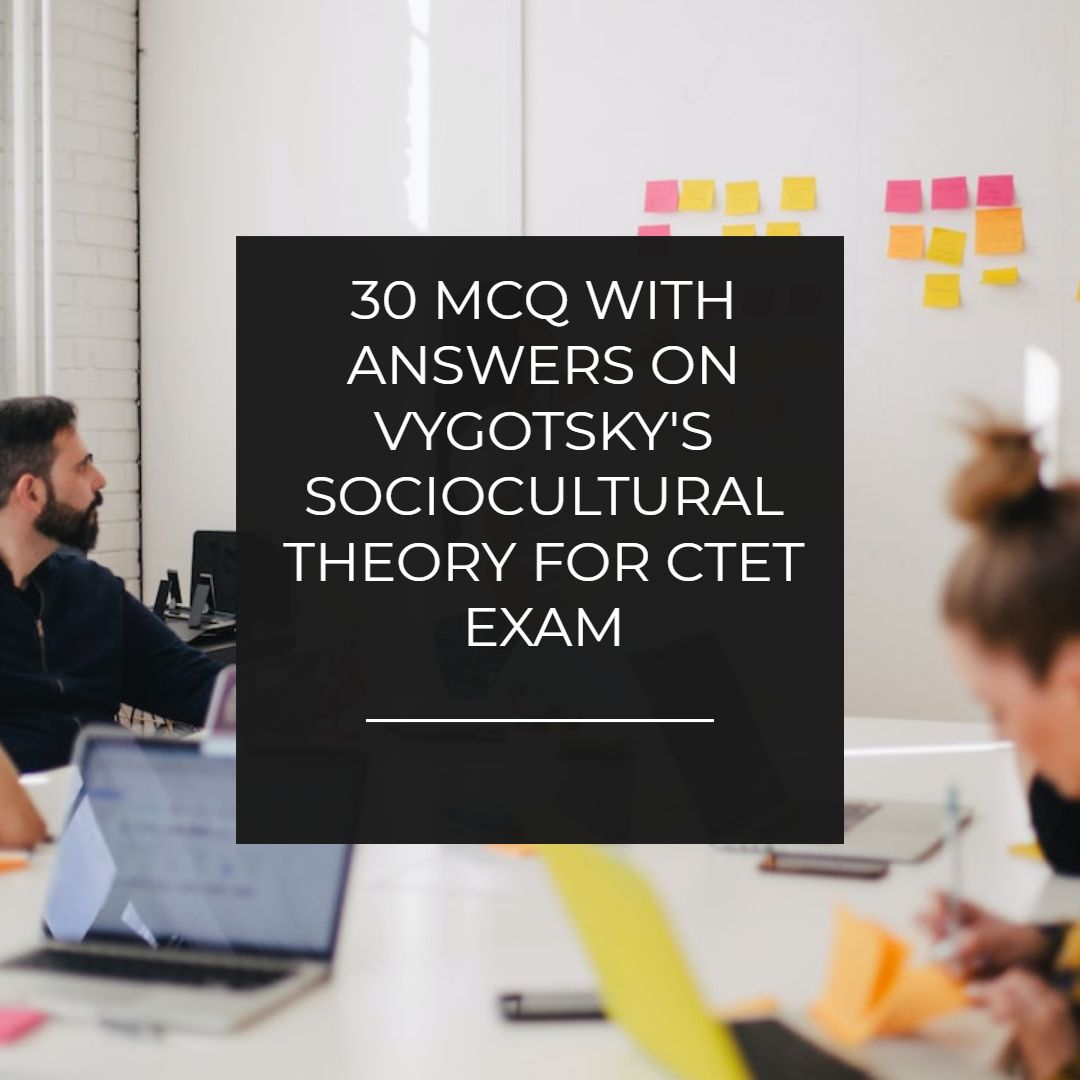30 MCQ with answers on Use of technology in teaching and learning for ctet exam
30 MCQ with answers on Use of technology in teaching and learning for ctet exam
Certainly! Here are 20 multiple-choice questions with answers on the use of technology in teaching and learning for the CTET (Central Teacher Eligibility Test) exam:
-
What is the term used to describe the integration of technology in teaching and learning?
a) Digital literacy
b) Technology literacy
c) Technological pedagogy
d) Educational technology
Answer: d) Educational technology -
Which of the following is an example of educational technology?
a) Chalkboard
b) Overhead projector
c) Pen and paper
d) Tablet computer
Answer: d) Tablet computer -
How can technology enhance teaching and learning?
a) By replacing teachers with automated systems
b) By providing engaging and interactive learning experiences
c) By increasing the workload of teachers
d) By eliminating the need for traditional classroom materials
Answer: b) By providing engaging and interactive learning experiences -
Which of the following is an example of multimedia learning?
a) Listening to a lecture
b) Reading a textbook
c) Watching an educational video
d) Taking notes in class
Answer: c) Watching an educational video -
What is the benefit of using educational apps in the classroom?
a) It reduces students’ screen time
b) It allows for personalized and interactive learning experiences
c) It eliminates the need for teacher-student interaction
d) It requires minimal teacher preparation
Answer: b) It allows for personalized and interactive learning experiences -
How can technology support differentiated instruction?
a) By providing the same content and activities to all students
b) By automating the assessment process
c) By adapting instruction to meet students’ individual needs
d) By replacing teachers with virtual tutors
Answer: c) By adapting instruction to meet students’ individual needs -
What is the term used to describe the process of recording and analyzing students’ online learning activities?
a) Gamification
b) Learning analytics
c) Virtual reality
d) Augmented reality
Answer: b) Learning analytics -
Which of the following is an example of a collaborative learning activity supported by technology?
a) Individual reading assignments
b) Group discussions
c) Teacher-led lectures
d) Written exams
Answer: b) Group discussions -
What is the purpose of using simulations and virtual labs in science education?
a) To replace hands-on experiments in the laboratory
b) To provide a realistic and interactive learning experience
c) To reduce the cost of science education materials
d) To decrease students’ engagement and interest in science
Answer: b) To provide a realistic and interactive learning experience -
How can technology support assessment and feedback in the classroom?
a) By eliminating the need for traditional assessments
b) By providing instant feedback to students
c) By reducing the workload of teachers in grading
d) By replacing teacher-student interactions with automated systems
Answer: b) By providing instant feedback to students -
Which of the following is an example of a learning management system (LMS)?
a) Google Docs
b) PowerPoint presentations
c) Moodle
d) YouTube
Answer: c) Moodle -
How can technology support students with special needs in inclusive classrooms?
a) By replacing individualized support with automated systems
b) By providing assistive technologies for students with disabilities
c) By segregating students with special needs in separate classrooms
d) By eliminating the need for differentiated instruction
Answer:
b) By providing assistive technologies for students with disabilities
-
What is the term used to describe the process of using digital tools to create, collaborate, and share knowledge?
a) Digital citizenship
b) Digital literacy
c) Digital footprint
d) Digital storytelling
Answer: b) Digital literacy -
Which of the following is an example of a flipped classroom approach?
a) Students watch instructional videos at home and engage in activities in class
b) Students listen to lectures in class and complete assignments at home
c) Students work individually on assignments during class time
d) Students receive personalized feedback from automated systems
Answer: a) Students watch instructional videos at home and engage in activities in class -
How can technology support remote learning and distance education?
a) By eliminating the need for face-to-face interactions
b) By providing synchronous and asynchronous learning opportunities
c) By replacing teachers with automated systems
d) By reducing the cost of education for students
Answer: b) By providing synchronous and asynchronous learning opportunities -
What is the term used to describe the process of using digital games for educational purposes?
a) Gamification
b) Simulations
c) Virtual reality
d) Augmented reality
Answer: a) Gamification -
Which of the following is an example of a digital citizenship skill?
a) Using technology responsibly and ethically
b) Completing assignments on time
c) Memorizing facts and figures
d) Following teacher instructions without questioning
Answer: a) Using technology responsibly and ethically -
How can technology support personalized learning?
a) By providing the same instruction to all students
b) By replacing teachers with automated systems
c) By adapting instruction to meet students’ individual needs
d) By eliminating the need for formative assessments
Answer: c) By adapting instruction to meet students’ individual needs -
Which of the following is an example of a digital tool for collaborative writing?
a) Word processor software
b) Calculator
c) Video editing software
d) Spreadsheet software
Answer: a) Word processor software -
How can technology support the development of 21st-century skills?
a) By focusing solely on rote memorization of facts
b) By reducing students’ critical thinking and problem-solving abilities
c) By providing opportunities for creativity, collaboration, and innovation
d) By replacing traditional teaching methods with standardized tests
Answer: c) By providing opportunities for creativity, collaboration, and innovation
I hope these MCQs assist you in your CTET exam preparation! Best of luck!




